Earth in Upheaval Revisited
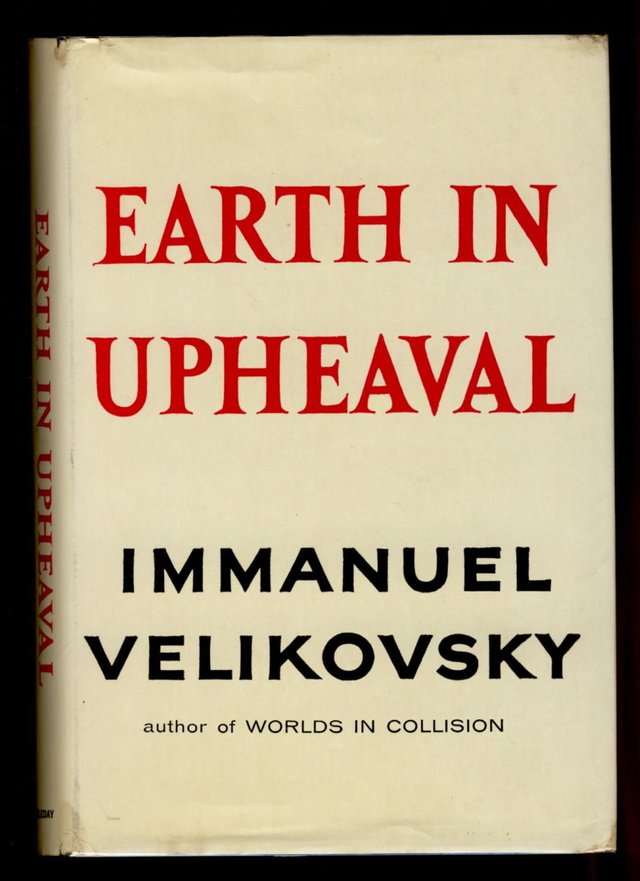
In an ongoing series of articles, Ireland and the Short Chronology, I have been investigating the early history of Ireland in the light of a revisionist model of ancient history that the late Lynn E Rose, Professor Emeritus of Philosophy at the University at Buffalo, called The Short Chronology. The origins of this model lie in the pioneering efforts of Immanuel Velikovsky to correct the inaccuracies of conventional historical models and reconstruct the true chronology of the ancient world.
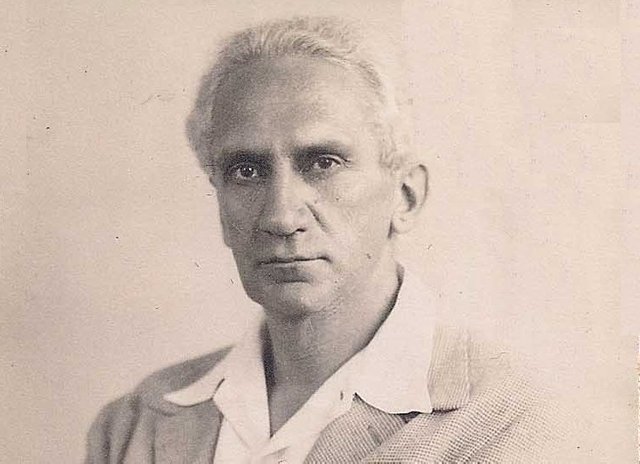
Immanuel Velikovsky
Immanuel Velikovsky was born in 1895 in Vitebsk, Russia (now Belarus), to a family of prosperous Jewish Zionists. A peripatetic and unsettled youth took him from Russia to Ukraine, Austria, Palestine, Egypt, Turkey, Finland, France, Britain, Caucasia, Latvia, Lithuania, Estonia, Sweden and Germany. He studied medicine in Montpellier, France, and Edinburgh, Scotland, before finally taking his medical degree at Moscow State University in 1921.
Between 1921 and 1923 Velikovsky worked in Berlin for his father’s foundation Scripta Universitatis Atque Bibliothecae Hierosolymitanarum, which published Hebrew translations of academic papers on behalf of the recently founded Hebrew University of Jerusalem. Nobel Laureate Albert Einstein was one of his collaborators on this project.
In 1923 Velikovsky married a young violinist named Elisheva Kramer, who worked as a secretary for the Scripta Universitatis. Later that year they moved to Palestine, where Velikovsky practised medicine and developed a keen interest in the problems of the unconscious, while Elisheva gave concerts. In 1933 they visited Vienna to further Velikovsky’s interests in psychiatry. There he became an associate of Wilhelm Stekel and Paul Federn, both former pupils of Sigmund Freud, and of Alfred Adler, another pioneer in the field of psychoanalysis.
Velikovsky was also acquainted with Freud himself. The two corresponded throughout the thirties, and Freud was instrumental in having several of Velikovsky’s psychoanalytical papers published in Imago and Psychoanalytische Bewegung. In 1939, when he was living in Tel Aviv, Velikovsky read Freud’s Moses and Monotheism. It was an experience that would change the course of his life:
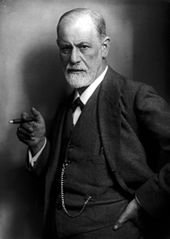
Once I stood before a window of a bookstore; there was the book of Hitler, Mein Kampf, and the book of Freud, Moses and Monotheism. I deliberated which to buy, and bought the latter ... Now the reading of Moses and Monotheism led me to surmise that the Pharaoh Akhnaton, whom Freud thought to be the originator of monotheism and a teacher of Moses, was in fact the prototype of Oedipus of the Greek legend ...
I also concluded that Freud had some unsolved problem of his own concerning his being a Jew, and I turned to his own dreams as found in his Interpretation of Dreams, about sixteen in number. I found that, truly, he had a subconscious desire to convert to Christianity, in order to open up for himself the road to advancement. (Days and Years)
Freud had argued that the Biblical figure of Moses was not a Hebrew but an ancient Egyptian adherent of the heretical Pharaoh Akhnaton. Velikovsky, a Zionist Jew who believed that the Jewish claim to Palestine was premised upon the Mosaic dispensation, was determined to prove Freud wrong. It is curious that Velikovsky’s interests in ancient history and catastrophism were initially piqued by his Zionist leanings. He never lost his commitment to the politics of Zionism and it sometimes coloured his opinions in other fields, but as his interest in ancient history evolved from mild curiosity to life-absorbing obsession, the Zionist question faded into the background.
Thus I had the idea to write a book on Freud and his heroes [Oedipus, Akhnaton and Moses]. In Tel-Aviv I could hardly concentrate on writing, and the meager Tel-Aviv library did not suffice for doing research. Also, I looked with concern upon the approaching war, which I correctly predicted in an article offered to Klinoff, editor of Haaretz. I decided to go to America. (Days and Years)
In July 1939 Immanuel Velikovsky emigrated to the United States of America with his wife and two daughters.

New York
As a qualified Jewish psychiatrist in New York Velikovsky could very easily have established a lucrative practice for himself, but his radical new ideas in the field of ancient history had taken such a hold on his imagination that every spare moment of his waking life was spent researching the subject in the New York Public Library on 42nd Street:
For eight months I worked on Freud and his Heroes, publishing the interpretation of Freud’s dreams as a paper in the Psychoanalytic Review (1941). After eight months we were prepared to go home. On the day we had to sail, I was informed that my manuscript, “Freud and his Heroes” was accepted for print. We remained. (Days and Years)
The publishers subsequently informed Velikovsky that he would have to finish the manuscript before any contract could be signed. But Velikovsky never did finish Freud and His Heroes. His zeal for the project evaporated when he learned of Freud’s death in September 1939:
His death was also a personal shock to me, for I was about to mail him my reinterpretation of his dreams when the news of his death came. He, I thought, would have immediately recognized the correctness of my reinterpretation; this I could not expect from his pupils ... I never called the publisher again, nor did I write to him. Soon after the incident I became “a prisoner of an idea.” (Velikovsky 2012:27 ... 29)
That captivating idea led Velikovsky, in April of 1940, to begin drafting a reconstruction of ancient Egyptian history:
I came upon the idea that the Exodus took place during a physical catastrophe; I started on the reconstruction of ancient history—from the end of the Middle Kingdom to Alexander of Macedonia, finding the correct correlation. In about October 20 the same year I came to the understanding of the real cause of that catastrophe that was embodied in Worlds in Collision. I also realized the implications for the celestial mechanics—and published a summary in Cosmos without Gravitation (1946), as an issue of Scripta Academica. (Days and Years)
Over the following twelve years Velikovsky worked on his new model of ancient Egyptian and Near Eastern history to which he gave the title Ages in Chaos. In 1945 an outline of his reconstruction was published by the Scripta Academica as Theses for the Reconstruction of Ancient History. The first volume of the Ages in Chaos series appeared in 1952.
Throughout the 1940s, Velikovsky worked simultaneously on Ages and Chaos and what was to be his most famous work, Worlds in Collision. It is little exaggeration to say that he spent most of these ten years in Columbia University’s Butler Library on West 114th Street or the New York Public Library on 42nd Street. He later quipped that for eleven years he opened the University Library every morning and closed it every night (Wilk). Worlds in Collision was Velikovsky’s reconstruction of the natural events that formed a backdrop to the political and cultural events of Ages in Chaos.
A personal quest that had begun as an attempt to prove that Freud had been wrong to equate Moses with an ancient Egyptian had grown into something of cosmic proportions.
The Writing of Worlds in Collision
The thesis of Worlds in Collision hardly requires repeating. This is how Carl Sagan summarized it in his 1980 bestseller Cosmos:
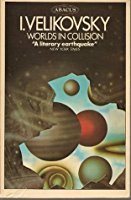
Major recent collisions from Saturn to Venus were alleged in a popular book, Worlds in Collision, published in 1950 by a psychiatrist named Immanuel Velikovsky. He proposed that an object of planetary mass, which he called a comet, was somehow generated in the Jupiter system. Some 3,500 years ago, it careered in toward the inner solar system and made repeated encounters with the Earth and Mars, having as incidental consequences the parting of the Red Sea, allowing Moses and the Israelites to escape from Pharaoh, and the stopping of the Earth from rotating on Joshua’s command. It also caused, he said, extensive vulcanism and floods. Velikovsky imagined the comet, after a complicated game of interplanetary billiards, to settle down into a stable, nearly circular orbit, becoming the planet Venus—which he claimed never existed before then. (Sagan 1980:90)
Velikovsky himself later wrote an account of how he had arrived at his concepts, from which the following extracts are taken:
I ... surmised that the Exodus took place in catastrophic circumstances. The story of the plagues and of the passage of the sea appeared to me as a description of some calamities in nature ...
I looked for an Egyptian reference to natural catastrophes ...
I read in the book of Joshuah. I was struck by the fact that the verse in which the sun and moon are described as disrupted in their motion was preceded by a verse telling of great stones falling from the sky ... I made a list of books on Chinese and Mexican lore—east and west—to find out whether a disruption in the motion of the sun is mentioned there ... St. Augustine wrote that Varro (a learned Roman of Caesar’s time whose books are not extant) referred to two authorities who claimed that in the time of Ogyges Venus changed its form and orbit. It was not more than two weeks, probably less, from the time that I realized that the catastrophes of the times of Moses and Joshua must have been not local but global, that I also realized that Venus must have played a decisive role in the events ...
Early in my work I became convinced that not only is the cosmology of the solar system very different from what is thought, but also the celestial mechanics that claims that only inertia and gravitation participate in the spheres above will need re-examination and so also the Darwinian evolution based on the principle of uniformitarianism or gradualism.
Soon I became aware that I had precursors—one was William Whiston, successor to Newton at Cambridge, who at the end of the 17th century claimed that the Deluge had been caused by a comet that was seen in 1680 ...
With Whiston I agreed as to the Deluge having been caused by a comet; but I had much more to say: Saturn was disrupted by the close approach of Jupiter, and exploded; the explosion of Saturn engulfed the Earth and other planets. This is the story of Tammuz of the Babylonians and of Osiris of the Egyptians, and of Kronos of the Greeks. Centuries later Venus was born by the fission of Jupiter, which collected much of the material dispersed by Saturn.
Occasionally I would find that some other author had already come to one of the aspects of my theory. Once, I remember, in the library on Forty-second Street, I read the book of an author who advanced the idea that the Pyramids were built to serve as shelters against natural catastrophes, an idea I had already put into writing several years earlier. (How I Arrived at My Concepts)
The Establishment Strikes Back
Even before it appeared in print, Worlds in Collision was subjected to a campaign of vilification. Harlow Shapley, director of the Harvard College Observatory, was instrumental in having the book delisted by the Macmillan Company just two months after its publication. Although Shapley never attempted to suppress the work, he did discourage Macmillan from allowing it to appear under their rubric:
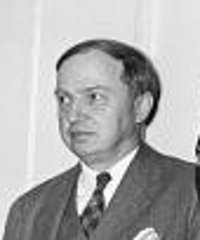
I have heard a rumor from a source that should be reliable that possibly Macmillan Company will not proceed to the publication of Dr. Velikovsky’s “Worlds in Collision.” This rumor is the first item with regard to the Velikovsky business that makes for sanity. What books you publish is of course no affair of mine; and certainly I would depend on your expert judgment rather than on my own feelings in the matter. But I thought it might be well to record with you that a few scientists with whom I have talked about this matter (and this includes the President of Harvard University and all of the members of the Harvard Observatory staff) are not a little astonished that the great Macmillan Company, famous for its scientific publications, would venture into the Black Arts without rather careful refereeing of the manuscript ...
Sincerely yours,
Harlow Shapley (18 January 1950)
To their credit, Macmillan proceeded to publish the book on 3 April 1950, but despite its popularity—it topped the New York Times Best Seller List for eleven weeks—they sold the rights to one of their competitors Doubleday and Company less than two months later. Doubleday went on to publish all but one of Velikovsky’s subsequent books.
Ironically, it had never been Velikovsky’s intention to have Worlds in Collision published under an academic rubric. Initially, he submitted the manuscript to more than half-a-dozen publishers of popular titles, but it was repeatedly rejected. One of the reasons given for its rejection was its scholarly format, with its extensive lists of citations:
Eight publishers rejected Worlds in Collision, mostly because of the many footnotes, believing that the book should be brought out by some subsidized academic (University) press. It was contracted by Macmillan in 1947 and published in 1950. (How I Arrived at My Concepts)
In the interest of balance, it should be pointed out that by his own admission Velikovsky himself had once declined to publish a paper submitted to the Scripta Universitatis in Berlin because he objected to its thesis:
With collaborators of Scripta, I had only once an unpleasant experience. Professor Radcliff Solomon of London, when invited to participate, sent in a paper on “What Became of the Philistines?” The paper was forwarded by me to the printer, and the galleys arrived together with the plate prints of the lithographs for the illustrations; I read the galleys one morning still in bed and was aghast. Radcliff Solomon reproduced scenes from the bas-reliefs of Ramses III in Medinet-Habu that depict the Pereset, recognized in the historical literature as the Biblical Philistines. Now Semites are supposed to be dolichocephales, or of long skulls; Pereset on the bas-reliefs were brachicephales, or round-headed. Three thousand years later among the Jewish legionnaires fighting under the British general Allenby, many were round-headed, as seen on photographs which, I believe, Radcliff Solomon made himself. He came to the conclusion that the Philistines became absorbed into the Jewish People. The argument seemed very flimsy, and, to add to it, the way I felt then and saw the purpose of the Scripta, it would have been almost sacrilegious to spread such an idea which would obtain, by publication in Scripta, a sanction of scholarship. I wrote to Solomon an apologetic letter and offered, also ordered, the lithographs to be sent to the author for his use wherever he might succeed. (Actually, two years later, at the opening of the Hebrew University, I received a reprint of the article with a few triumphant words of the author who came to participate in the opening—by then we lived in Jerusalem.) (Days and Years)
After Worlds in Collision
In Worlds in Collision Velikovsky relies heavily on the discipline of comparative mythology to defend his thesis. Although virtually every claim made in the text is supported by a relevant source, those sources are for the most part of a literary, religious or mythological nature. It was all too easy for scientists—especially physicists—to dismiss the book for this very reason. Astronomer Carl Sagan, one of Velikovsky’s most strident critics, characterized this attitude:
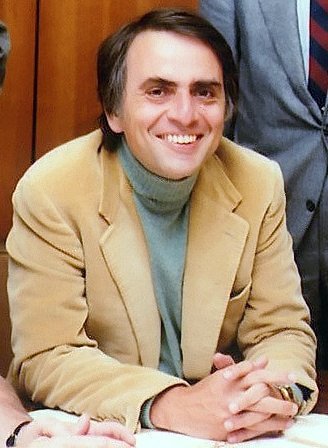
Velikovsky has called attention to a wide range of stories and legends, held by diverse peoples, separated by great distances, which stories show remarkable similarities and concordances. I am not expert in the cultures or languages of any of these peoples, but I find the concatenation of legends Velikovsky has accumulated stunning. It is true that some experts in these cultures are less impressed. I can remember vividly discussing Worlds in Collision with a distinguished professor of Semitics at a leading university. He said something like “The Assyriology, Egyptology, Biblical scholarship and all of that Talmudic and Midrashic pilpul is, of course, nonsense; but I was impressed by the astronomy.” I had rather the opposite view. (Sagan 1979:101)
With a nod to Jack Sprat and his wife, Sagan and his colleague licked Velikovsky clean.
Velikovsky’s response to this criticism was to hit the books. For the better part of the following three years, he immured himself in the libraries at Columbia and Princeton Universities—the Velikovskys moved to Princeton in the fall of 1952—and researched the geological and palaeontological bases of his catastrophist theories. The result was one of his finest books, Earth in Upheaval, first published by Doubleday in 1955.
In 1955, my father’s book Earth in Upheaval was published. This marked a new pattern of abuse by the scientific community to suppress Velikovsky’s work. Instead of collective attacks, there was collective silence. The response by the scientific journals and reviewers was to ignore its presence. ( Velikovsky Sharon 138)
I suspect this is an exaggeration. The book was reviewed in The New York Times on 20 November 1955, and in The Washington Post on 15 January 1956. But the publication of Earth in Upheaval did not precipitate the same sort of international brouhaha that had followed the appearance of Worlds in Collision. And unlike its predecessor Earth in Upheaval never topped the New York Times Best Seller List.
Velikovsky and Einstein
Bearing in mind Harlow Shapley’s fundamental objections to the very cornerstone of Velikovsky’s hypothesis, it is of considerable interest that no less a figure than Albert Einstein was broadly sympathetic to the theory of catastrophism:
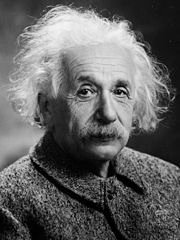
The late Dr. Albert Einstein, during the last eighteen months of his life (November 1953-April 1955), gave me much of his time and thought. He read several of my manuscripts and supplied them with marginal notes. Of Earth in Upheaval he read chapters VIII through XII; he made handwritten comments on this and other manuscripts and spent not a few long afternoons and evenings, often till midnight, discussing and debating with me the implications of my theories. In the last weeks of his life he reread Worlds in Collision and read also three files of “memoirs” on that book and its reception, and expressed his thoughts in writing. We started at opposite points; the area of disagreement, as reflected in our correspondence, grew ever smaller, and though at his death (our last meeting was nine days before his passing) there remained clearly defined points of disagreement, his stand then demonstrated the evolution of his opinion in the space of eighteen months. (Velikovsky 1955:$$)
This relationship is undoubtedly one of the most surprising developments of the entire Velikovsky Affair. Although Velikovsky does not go into any details, we are probably safe in inferring that the clearly defined points of disagreement which were never resolved did not extend to the fundamental contention that global catastrophes had periodically interrupted the progress of recent human civilization. Einstein surely had the wisdom and imagination to see that there were many things in Heaven and Earth than were dreamt of in his philosophy. But Einstein was a physicist no less than a dreamer. He could dream with Velikovsky of recent worldwide catastrophes that had repeatedly set back the course of human progress, but as a physicist he baulked at Velikovsky’s ideas on the cause and nature of those catastrophes.
Velikovsky’s detractors have consistently downplayed Einstein’s receptiveness to his ideas:
Velikovsky’s supporters refer often to favorable comments Einstein made about Velikovsky, but Einstein had a history of being gulled into embarrassing positions by people eager to use his reputation. Also, one can easily imagine Einstein not wanting to embarrass a good friend. Finally, for all his brilliance in physics, Einstein was simply not very well-informed on astronomy, geology or archaeology, the fields where Velikovsky’s errors are most glaring. (Stephen Dutch)
The subject of controversies over scientific work led Einstein to take up the subject of unorthodox ideas. He mentioned a fairly recent and controversial book [Worlds in Collision], of which he had found the non-scientific part—dealing with comparative mythology and folklore—interesting. “You know,” he said to me, “it is not a bad book. No, it really isn’t a bad book. The only trouble with it is, it is crazy.” This was followed by a loud burst of laughter ... Einstein was sorry that scientists in the U. S. had protested to publishers about the publication of such a book. He thought that bringing pressure to bear on a publisher to suppress a book was an evil thing to do. Such a book really could not do any harm, and was therefore not really bad. Left to itself, it would have its moment, public interest would die away and that would be the end of it. The author of such a book might be “crazy” but not “bad,” just as the book was not “bad.” Einstein expressed himself on this point with great passion. (Cohen)
But in a letter to Velikovsky dated 22 May 1954, Einstein makes it clear that while he cannot accept Velikovsky’s rewriting of celestial mechanics, he can accept his rewriting of human history. The reference is to the manuscript of the still unpublished Earth in Upheaval:
Remarks on the part of your manuscript “poles displaced” ... The proof of “sudden” changes (p. 223 to the end) is quite convincing and meritorious. If you had done nothing else but to gather and present in a clear way this mass of evidence, you would have already a considerable merit. Unfortunately, this valuable accomplishment is impaired by the addition of a physical-astronomical theory to which every expert will react with a smile or with anger—according to his temperament; he notices that you know these things only from hearsay—and do not understand them in the real sense, also things that are elementary to him. He can easily come to the opinion that you yourself don’t believe it, and that you want only to mislead the public. I myself had originally thought that it could be so. This can explain Shapley’s behavior, but in no case excuse it ... To the point, I can say in short: catastrophes yes, Venus no.
Whether Einstein did or did not endorse Velikovsky’s theories—and, if he did, to what extent—is of little significance now. Theories are upheld by facts, observations and experiments, not by the authority of those who endorse them. Nevertheless, Einstein’s sympathy for this “crank” should give Velikovsky’s opponents pause.
Velikovsky and Claude Schaeffer
Another mainstream academic who was supportive of Velikovsky’s catastrophism was the French archaeologist Claude Schaeffer, the excavator of the ancient city of Ugarit in Syria.
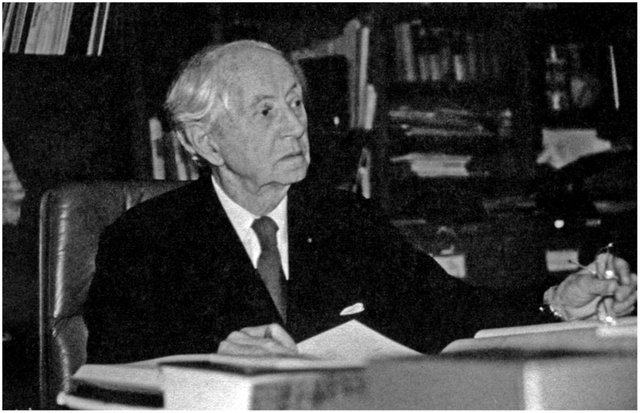
Schaeffer was not particularly interested in the causes of these recent catastrophes and did not wish to involve himself in arguments about celestial mechanics or physics:
Perhaps it is good, at present, to establish only the reality of those crises and tremendous upheavals during the last millennia before our time, or B.C. and leave the study of the causes to later research. (The Velikovsky Correspondence 23 July 1956)
Off the Mooring
Earth and Upheaval documents the geological and palaeontological evidence that the Earth has suffered global catastrophes within the recent past. For the most part, it does not present any astrophysical evidence bearing on the causes of those alleged catastrophes. It might have been written for those of Velikovsky’s critics who were open to the idea of recent global catastrophes but who could not accept the idea that our quiescent Solar System had been the scene of a chaotic game of celestial billiards a few millennia ago. As Einstein put it: Catastrophes yes, Venus no.
It is my intention in this series of articles to go through the text of Earth in Upheaval and reassess Velikovsky’s claims one by one. How well does this classic hold up to scrutiny more than sixty years after its publication? Have its central assertions been refuted by subsequent scholarship? Have they been confirmed? Or is the jury still out?
Let us slip our moorings and follow Velikovsky into the great unknown ...
References
- Carl Sagan, Broca’s Brain: Reflections on the Romance of Science, Ballantine Books, New York (1979)
- Carl Sagan, Cosmos, Random House, New York (1980)
- I Bernard Cohen, An Interview with Einstein, Scientific American, Volume 193, Number 1 (July 1955), pp 68-73, Gerard Piel, New York (1955)
- Immanuel Velikovsky, The Dreams Freud Dreamed, Psychoanalytic Review, Volume 28, pp 487-511, Smith Ely Jelliffe, New York (1941)
- Immanuel Velikovsky: Theses for the Reconstruction of Ancient History from the End of the Middle Kingdom in Egypt to the Advent of Alexander the Great, Scripta Academica Hierosolymitana, Scientific Report III, Simon Velikovsky Foundation, Jerusalem (1945)
- Immanuel Velikovsky, Cosmos without Gravitation: Attraction, Repulsion, and Electromagnetic Circumduction in the Solar System, Scripta Academica Hierosolymitana, Scientific Report IV, Simon Velikovsky Foundation, Jerusalem (1946)
- Immanuel Velikovsky, Ages in Chaos: A Reconstruction of Ancient History from the Exodus to King Akhnaton, Doubleday & Company, New York (1952)
- Immanuel Velikovsky, Days and Years (Unpublished)
- Immanuel Velikovsky, How I Arrived at My Concepts (Unpublished)
- Immanuel Velikovsky, Stargazers and Gravediggers: Memoirs to Worlds in Collision, Paradigma Ltd (2012)
- Ruth Velikovky Sharon, ABA – The Glory and the Torment: The Life of Dr. Immanuel Velikovsky, Paradigma Ltd, (2010)
- Gerard H Wilk, On the Horizon: The Meteoric Velikovsky, Commentary Magazine, Interviews with Immanuel Velikovsky, 1 April 1952, New York (1952)
Image Credits
- Earth in Upheaval: Fair Use
- Immanuel Velikovsky in 1947: Wikimedia Commons (adapted), © Huddyhuddy, Creative Commons License
- Sigmund Freud: Wikimedia Commons, Public Domain
- New York Public Library in 1941: © The City of New York, New York City Parks Photo Archive, Fair Use
- Worlds in Collision: © 1972 Sphere Paperbacks, Fair Use
- Harlow Shapley: Wikimedia Commons, Public Domain
- Carl Sagan: Wikimedia Commons, Public Domain
- Albert Einstein: Wikimedia Commons, Public Domain
- Claude Schaeffer: © 1979 K Bergerhof, M Dietrich, O Loretz, Fair Use
- Immanuel Velikovsky in 1974: Wikimedia Commons, Donna Foster Roizen (photographer), © Frederic Jueneman, Creative Commons License
Thank you for publicising this info! So many unanswered questions in geology, astronomy and all the sciences that can be explored with new eyes and thinking.
You're welcome, and thank you for the comment.
Harlotscurse, excellent summary of the Alaska Muck. Also quite timely. I suspect you be pleased to see this amazing paper in Nature Reports last week: https://www.nature.com/articles/s41598-017-16958-2 Your work was prescient! I publish regularly with the authors and would be happy to put you in touch for more info. Here is my blog: www.cosmictusk.com and email: [email protected].
Thanks for the heads up. I will check it out.